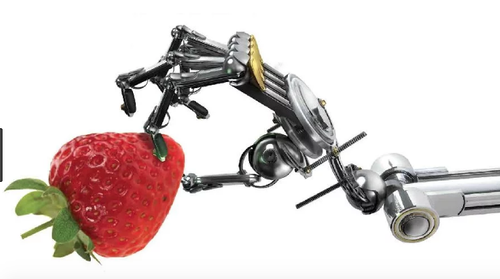Doing some more weekend reading in "Machine Platform Crowd" the popular and well quoted tract on what we are looking at this second phase of the machine age.
Some of you might be familiar with restaurant Eatsa in San Francisco where all the food is ordered, paid and received without any human contact. Seems like sort of a lonely place to eat, but no matter, everything is automated on the customer service side, with the key points being precise analysis of throughput, speed of service, predictive ordering and inventory optimization by store.
Now Eatsa wants to take it to the next level and automate the preparation of the food itself.
This is where is gets interesting folks. Because while a lot of the food preparation in the kitchen is going the way of automation, the company still hires humans for handling all the food items that are not regularly shaped and not hard. So, the avocados, tomatoes and eggplants are all still handled by people. All three of which are still firmer than strawberries and a whole lot firmer than a mature raspberry or blackberry.
The answer of why this is so is really instructive to those who are thinking through the problem of automating fruit picking.
The challenge is that a lot of what people do isn't programmable, not even by a long shot. Think about it, when you pick up something, not even necessarily a soft fruit, can you explain how or even why you are doing it? That you are picking up the object up is clear, but can you articulate all of the sense data and muscle mechanics that is making this most ordinary event happen? No, you can't, and so how would you even start to instruct a computer or robot on to do it?
Here from the book, on the same point on why a robot can't do what most of us take for granted without ever knowing how (italics mine):
"This is because robot's sense of vision and touch have historically been quite primitive - far inferior to ours - and proper handling of a tomato generally entails seeing and feeling it with a lot of precision. It's also because it's been surprisingly hard to program robots to handle squishiness - here again we know more than we can tell - so robot brains have lagged far behind ours, just as their senses have."
People just aren't that easy to replace - might want to think about having robots work with us, rather than instead of us.
Attached Images:
